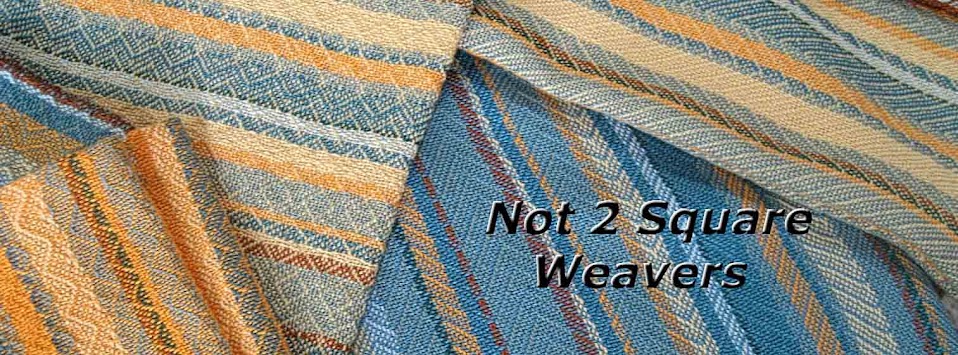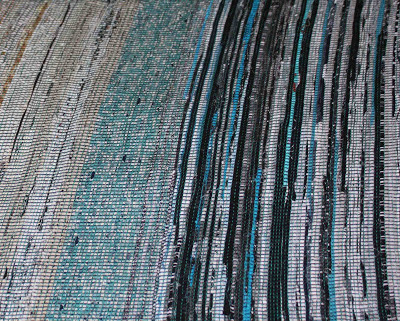At the March meeting, there were several projects that had been woven using fabric strips for the weft. The photo above shows details in a jacket woven and sewn by Sue Habegger. She used a rayon challis fabric and cut the strips on the bias to keep them from fraying during the weaving and finishing process. The resulting jacket is almost like chenille cloth and very elegant. The photo below is her sketch for the jacket and a samples of original yardage, handwoven twill for the front opening and the cloth for the body of the jacket. I believe she used a pick or two of fine yarn between the shots of fabric weft to make the cloth more supple.

Dee Jones brought out a couple of garments she had woven and sewn using fabric wefts. The first is a vest woven with silk strips. Dee folded the fabric strips in half as she wove, but didn't tuck in the ends of the fabric wefts and let them peek out of the finished cloth. This is a project from several years ago and Dee didn't remember the details about how it was woven, but it looked as though there might be finer thread picks between the fabric shots in this cloth as well.
The final jacket (below) was also woven by Dee. She says it has been worn a lot since she made it, yet is looks like new. This definitely has fine thread picks between the fabric shots. Look at the lovely purple lining and elegant buttons!


















































